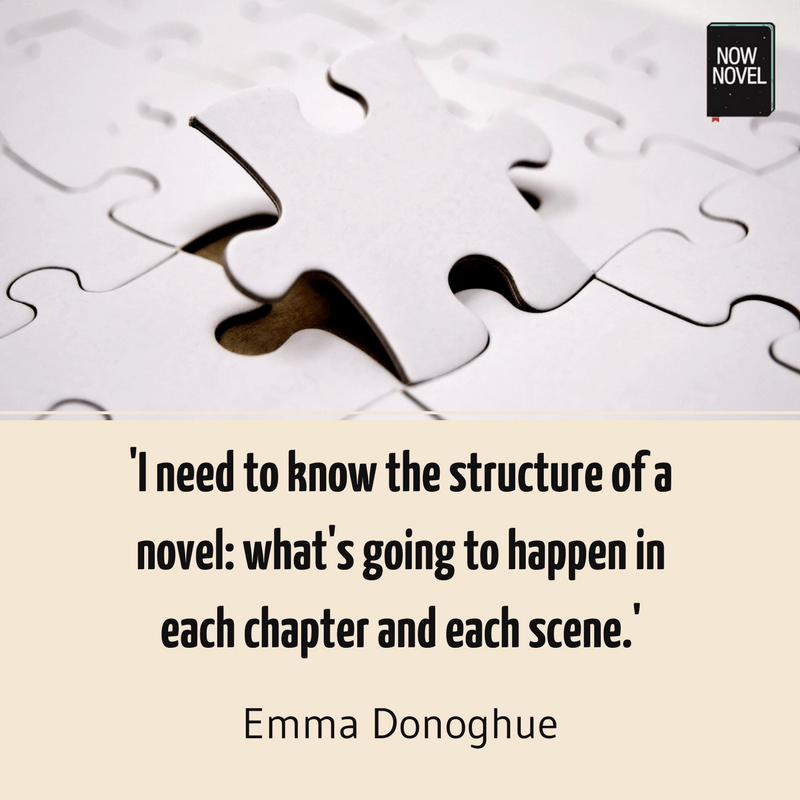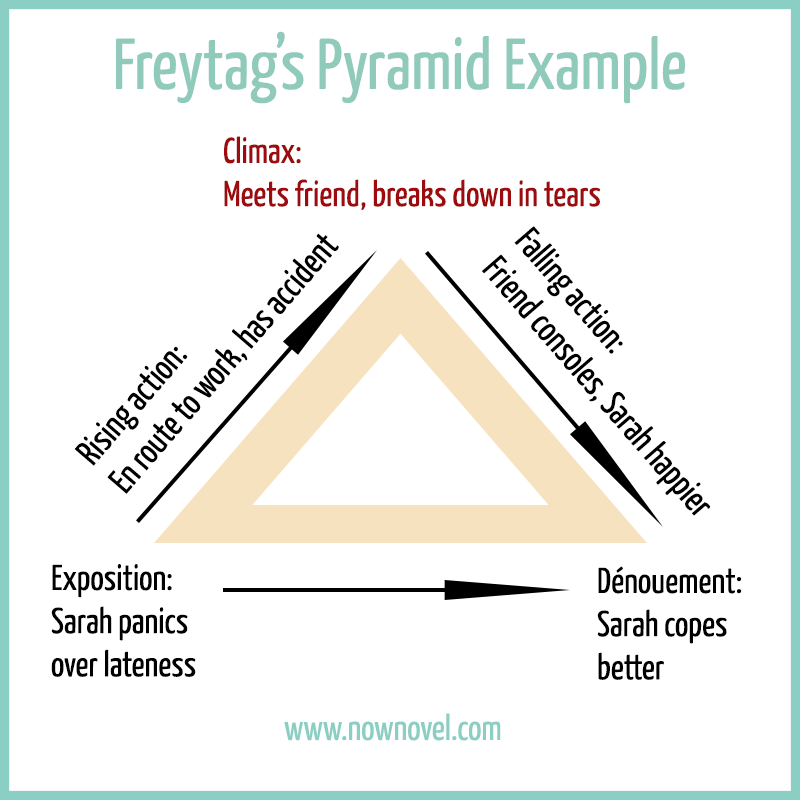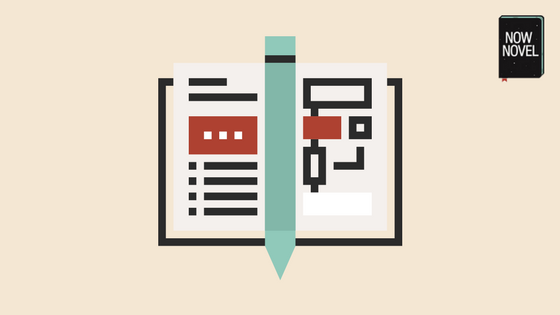Plot structure or narrative structure is a key element of story. Even the most simple children’s stories have story events that relate to each other, showing intriguing cause and effect, action and reaction. Here are tips for shaping your story so there is satisfying connection between scenes and events, starting with a definition of plot structure:
What is plot structure?
To plot, as a verb, means ‘to devise the sequence of events in (a play, novel, film, or similar work)’ (OED). Plot structure means the larger connection between sequences of events, spanning scenes and chapters – your entire novel. How do the events of Chapter 1 relate to what happens in Chapter 10? That’s plot structure.
It’s important to mention upfront that there are many approaches to plot structure. Some authors love to impose narrative structure from the start, creating a full outline. Others are happy with partial structure.
Kurt Vonnegut, for example, said ‘I don’t plot my books rigidly, follow a preconceived structure. A novel mustn’t be a closed system – it’s a quest.’
This is a good point – place, the regions your characters visit as they quest – may guide plot decisions as much as anything else.
Others, like author of Room Emma Donoghue prefer to have a guiding base structure:
‘Some writers can produce marvelous plots without planning it out, but I can’t. In particular I need to know the structure of a novel: what’s going to happen in each chapter and each scene.’
Regardless of how much – or how little – you need to know in advance, it’s important to know how to link scenes, chapters, and sections of your story so that cause and effect – the driving action and reaction of your story – is clear.
So how can you ensure that your introductory chapters (exposition) along with the rest of your story are cohesive?

1. Plan a linked series of story events
Often Now Novel members approach us with this challenge:
‘I have a bunch of scenes but I don’t really know how to string them together.’
It’s a frustrating predicament to be in – you have boundless ideas but no idea of how they all relate to each other – of the series they form. We can divide series of plot events into two broad categories, to start. Understanding both will help you connect scenes and events better:
Elements of plot structure: Character arcs
Character arcs play a key part in giving stories a sense of structure. Even a short story of two and a half pages has story structure. Think about it, does this have satisfying structure?
‘Sarah has breakfast. Later she sees someone total their car on the highway. In the evening, she gets lost downtown and is late to meet her friend.’
These events seem unrelated, and if you expanded each into narrative, a reader would likely be confused, especially when you move on to the next event without showing, for example, the relevance of the accident to what comes next.
Character arcs, key to plot structure, help us understand how events fit together. Let’s take the same events and find a structuring character arc in them:
‘Sarah has breakfast and dawdles because she didn’t sleep well. As a result, she’s rushing to work, late. Distracted, she has a near accident on the highway. Someone’s car is totalled. When she sees her friend that evening, her nerves are still shattered (she gets lost en route to meeting the friend, making her even more upset). She breaks down, telling her friend about her awful day.’
The words and phrases in italics show the connective tissue between the events that weave them into a structured sequence.
This sequence is better because:
- There is a clear series of related events
- The character is active (instead of just seeing the accident, in version two Sarah is an active participant)
- There is an emotional component of rising action, as we see Sarah’s day get worse – the encounter with the friend further shows that Sarah is struggling to hold it together
The above character arc might show that a character isn’t taking care of herself and is getting into risky situations because of this. Or, depending on what happens between these plot points, you could play this series of events for laughs. Perhaps Sarah has absurd, strange encounters as a result of these upsetting experiences.
However you spin the finer details, create structure by making sure, to start, you connect individual events and actions. As the author E.M. Forster said, ‘Only connect.’
Elements of plot structure: Story arcs
While character arcs show how individual characters’ experiences unfold, story arcs are series of events that may be more general.
For example, if there are background events in your story that affect some or all of your characters, and aren’t tied to a single character’s personal experience.
If you set a book in World War II, for example, you could use the historical key moments of the war to create a story arc influencing your characters’ individual paths.
These external events (broader historical and societal, or environmental changes) also help to create structure. They set parameters for what can or can’t happen. For example, in a wartime police state, characters can’t travel as freely as they can during peacetime.
Structure your story around characters’ paths as well as these additional factors that constrain or influence their choices.
2. Use plot diagrams to visualize story structure
Practical challenges make putting story structure into action difficult. How do you see the overarching shape of your story? Creating plot diagrams is a useful tool if, like Emma Donoghue, you find it reassuring to keep a bird’s eye view of your story.
What are the elements of plot a story structure diagram helps you visualize?
- Chronology: The sequence of plot events in time. This is particularly important if your story has a historical element, as dates and major events may play a significant part
- Rising and falling action: Plot diagrams also help you visualize where tension and suspense in your story peak or taper off
- Turning points and reversals: Diagrams help you see, in a broad sweep, the moments where characters’ situations change for better or worse
Let’s look at an example to clarify, using Freytag’s Pyramid. This is a plot structure template the German playwright Gustav Freytag devised after studying many classic tragedies and finding common elements in their structure.
Freytag divided classic drama for the stage into five parts:
- Exposition: Here the author introduces important background information
- Rising action: A series of events builds towards an event of great interest, setting up the story’s climax
- Climax: A turning point, where the main character’s fate has a reversal. In a comedy (e.g. a farce) this is where things start to get better. In a tragedy, where they get worse beyond any possible return.
- Falling action: This is where conflicts – whether external (between a main character and antagonist) or internal (a character’s own internal struggle) is resolved further.
- Dénouement: Pronounced ‘denumɑ̃’, this is where the story’s complexities or open questions are finally resolved
We can plot this visually:

Or, using our (simple) example of ‘Sarah’s Bad Day’:

Here is a more detailed look at Freytag’s Pyramid with other examples from literature
Other plot visualizing techniques such as timelines are equally useful. Or create a spreadsheet with columns for ‘Chapter 1’, ‘Chapter 2’, and so forth. In each, write a one sentence summary of an idea of what happens in that chapter.
Learning to simplify at the planning stage will help you create structure without getting bogged down in detail.
3. Structure each individual part of your plot
One of the things that makes a plot feel strong and structured is balance. If you have a fantastic, jaw-droppingly great opening and a mediocre middle, your story could feel imbalanced.
What are the elements of plot you need to structure and balance?
There are three parts of your plot that matter: Your beginning, middle and end. It really is that simple. To make sure the three connect:
- Build on your starting set-up: Say your character has a chronic addiction. How will this factor into the broader story? Perhaps it’s one complication they have to overcome in order to get to the turning point for a happier ending. Foreshadow the tensions or unknowns your story will answer
- Raise stakes, tensions and complications in the middle: We become more invested when more hangs in the balance. In a romance novel, it could be the cracks that start to show in a budding relationship. Maybe one character loves Rock ‘n Roll music and the other is a Pop lover. Issues can be this simple (and petty). The important thing is that there is friction of some kind. Something to make your story’s outcome less certain
- Show satisfying solutions towards the end: In a Dr. Seuss book, after making a terrible mess the Cat in the Hat cleans up. In a novel about mafia warfare, the tough, no-nonsense cop ‘cleans up’ the town. The principles are the same. Take what you’ve built and unpick remaining narrative knots. If you plan to write a series, however, leave some knots tied. Don’t solve every riddle.
To balance your start, middle and end:
- Make sure one part isn’t far longer than the others: It can become monotonous, for example, for the reader to wade through an expository opening that never gets to the point
- Give each part gripping unknowns: Who is the suspect who hides behind drawn curtains? What happens when the detective is closing in in the final chapters? Make sure every section of your story is structured around its own inciting incidents and results
Read other posts on structuring beginnings, middles and endings and make sure each part of your story has variety: Variable tension, pace, and intrigue.
4. Let your characters be your guide
Ultimately, plot structure is a tool to help you see the bigger picture. Some have criticized models such as Freytag’s pyramid. After all, Freytag’s study was a specific study of types of drama at a specific time. In modern fiction, an author like Bret Easton Ellis may end a novel mid-sentence, after all, and get away with it (The Rules of Attraction). It’s clear that story structure isn’t ‘one size fits all’.
Even so, models such as Freytag’s pyramid are useful because they remind us that great stories do have arcs and trajectories, rise and fall. Sometimes tension is nail-bitingly unbearable, other times the story is like a warm, familiar, comforting hug. Planning how you vary and sequence components of your story (tension, action, pace) makes this a conscious decision, and gives you the power to sculpt exactly where your reader experiences this or that thrill or moment of calm.
Need help structuring your novel? Join Now Novel for constructive feedback or work with a writing coach for help tailored to your current storytelling challenges.


5 replies on “Plot structure: How to shape an intriguing plot”
Its great
Thank you, Christoforos, glad you enjoyed reading this.
Thank you for this!
It’s a pleasure, Robin! Glad you enjoyed reading.
It’s a lot. And thanks a lot.